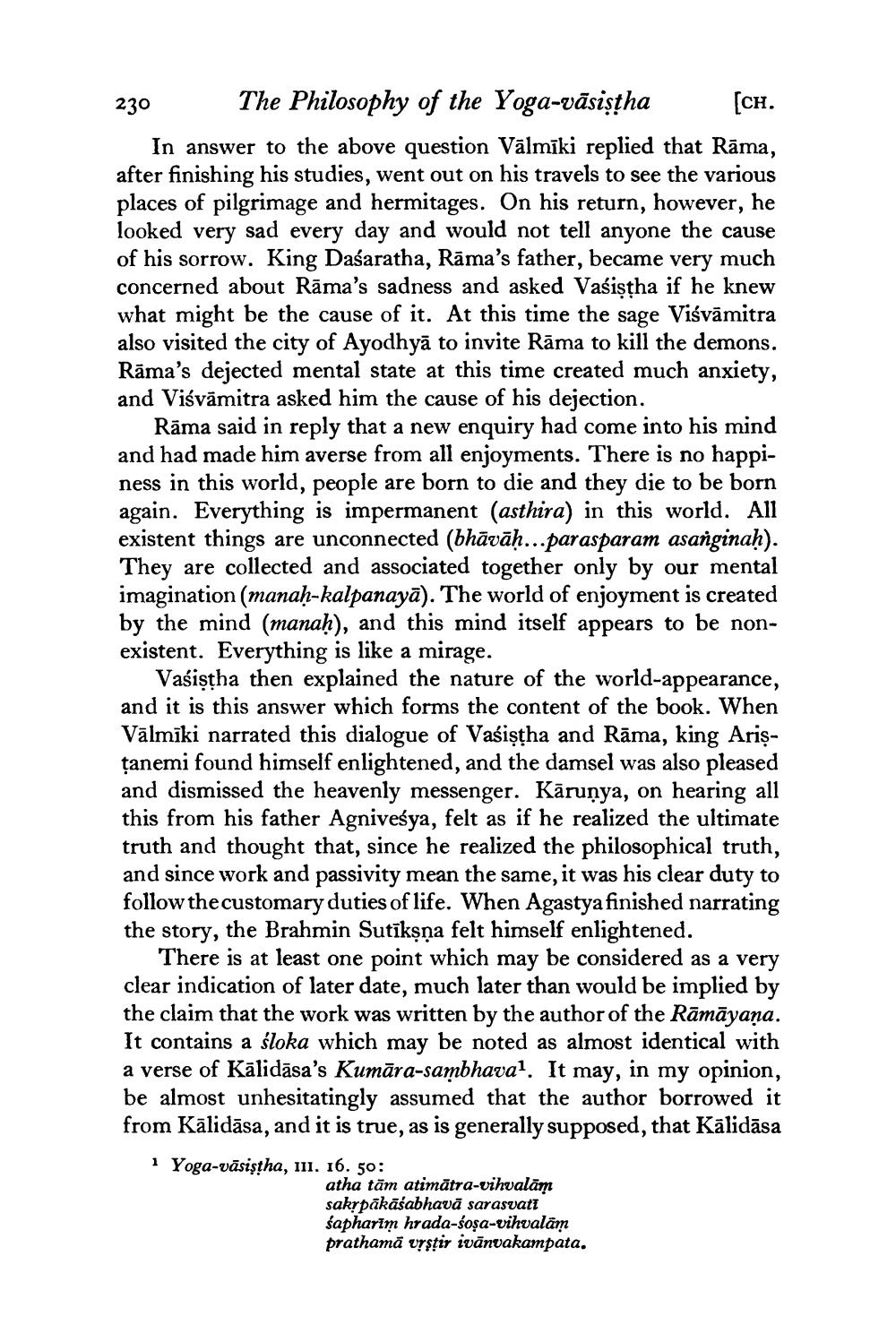________________
230
The Philosophy of the Yoga-vasistha
[CH.
In answer to the above question Valmiki replied that Rāma, after finishing his studies, went out on his travels to see the various places of pilgrimage and hermitages. On his return, however, he looked very sad every day and would not tell anyone the cause of his sorrow. King Dasaratha, Rama's father, became very much concerned about Rāma's sadness and asked Vasistha if he knew what might be the cause of it. At this time the sage Viśvāmitra also visited the city of Ayodhya to invite Rāma to kill the demons. Rāma's dejected mental state at this time created much anxiety, and Visvamitra asked him the cause of his dejection.
Rāma said in reply that a new enquiry had come into his mind and had made him averse from all enjoyments. There is no happiness in this world, people are born to die and they die to be born again. Everything is impermanent (asthira) in this world. All existent things are unconnected (bhāvāḥ...parasparam asanginaḥ). They are collected and associated together only by our mental imagination (manaḥ-kalpanaya). The world of enjoyment is created by the mind (manaḥ), and this mind itself appears to be nonexistent. Everything is like a mirage.
Vasistha then explained the nature of the world-appearance, and it is this answer which forms the content of the book. When Valmiki narrated this dialogue of Vasistha and Rāma, king Ariştanemi found himself enlightened, and the damsel was also pleased and dismissed the heavenly messenger. Karunya, on hearing all this from his father Agniveśya, felt as if he realized the ultimate truth and thought that, since he realized the philosophical truth, and since work and passivity mean the same, it was his clear duty to follow the customary duties of life. When Agastya finished narrating the story, the Brahmin Sutikṣṇa felt himself enlightened.
There is at least one point which may be considered as a very clear indication of later date, much later than would be implied by the claim that the work was written by the author of the Rāmāyaṇa. It contains a sloka which may be noted as almost identical with a verse of Kālidāsa's Kumāra-sambhava1. It may, in my opinion, be almost unhesitatingly assumed that the author borrowed it from Kālidāsa, and it is true, as is generally supposed, that Kālidāsa
1 Yoga-vāsiṣṭha, III. 16. 50:
atha tām atimātra-vihvalām sakṛpākāśabhavā sarasvati sapharim hrada-soșa-vihvalām prathama vṛştir ivänvakampata.




